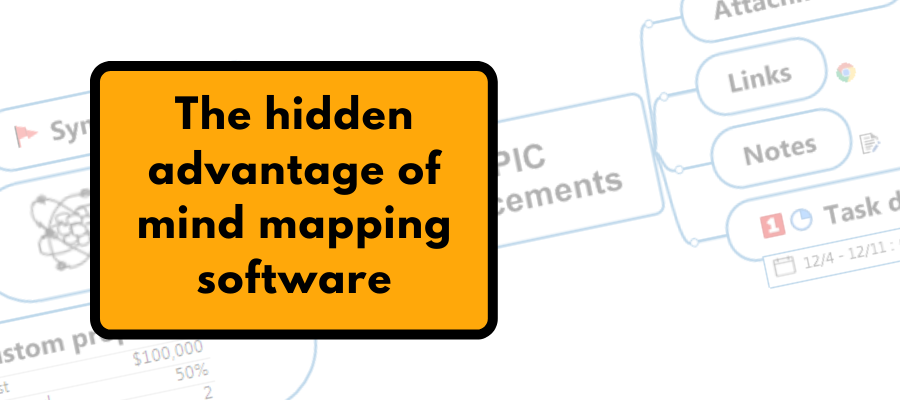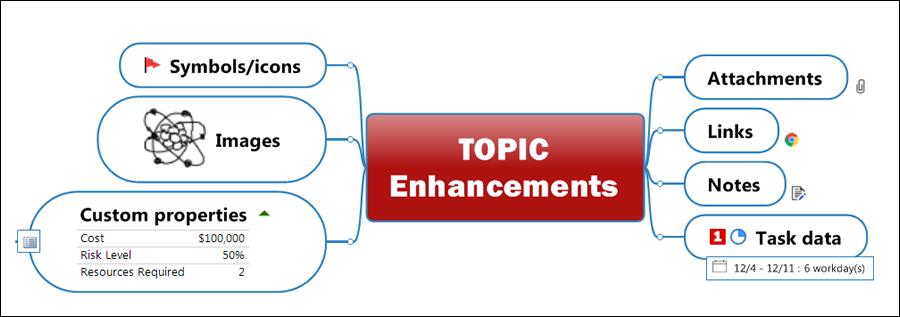
If you’re fairly new to the world of mind mapping software, then you may not know about one of its most important productivity-enhancing features: The ability to attach notes, files, hypertext links and other information to map topics. Today’s mind mapping software enables you to connect to an amazing variety of data and resources to your mind maps, which can help you to add more value to them.
Many new users of mind mapping software find its basic capabilities to be quite useful for brainstorming and getting organized. That’s definitely important. But if that’s where you’re at in your use of it, you’re missing out on a big opportunity to increase your productivity and effectiveness.
Most mind mapping software enables you to attach numerous types of content to individual topics. When you rearrange the topics, these assets follow along. In that sense, it’s helpful to think of each topic as a “container” for information. This characteristic makes it unique among the many types of business productivity software. And it gives its users a major advantage:
You can use this capability to keep a wealth of supporting information just a mouse click away.
Compare that to how you typically work. Like most of us, you probably have a deeply nested collection of file folders on your computer’s local drive or a network drive. Despite your best efforts to keep it organized, it has grown like a bed of weeds. That means you’re probably spending many frustrating hours a week just trying to figure out where you put files!
Your mind maps can keep all of this ancillary information neatly organized, within the context of the projects you’re working on. Think of these links as the functional equivalent of bookmarks or shortcuts in your web browser. They are pathways to information you want to be able to quickly and easily retrieve later.
In most mind mapping programs, notes may be attached to any topic and are displayed in a separate pane to the right or below the workspace. They are especially useful because they can be easily hidden from view, yet can be accessed via a single mouse click. Many programs enable you to format your text, including, bullet points, numbered lists, tables and more.
In a typical software produced mind map, all of these assets – files, hyperlinks and topic notes – are represented by small, unobtrusive icons. If you need access to one of these resources, simply click on its icon and the file opens. It’s that easy.
On the other hand, if you are just doing high-level work and don’t need these assets, they remain neatly tucked away, ready to be summoned forth if and when they’re needed. Meanwhile, they’re not distracting you, enabling you to work with a high-level view of your information.
There’s much more, of course – task data, symbols and icons, images and even custom data can be attached to your map topics. The result is something like a visual database of key information, knowledge and ideas, all neatly arranged, just a mouse click or two away!
So why not explore your program’s topic enhancement capabilities today?


Leave a Reply